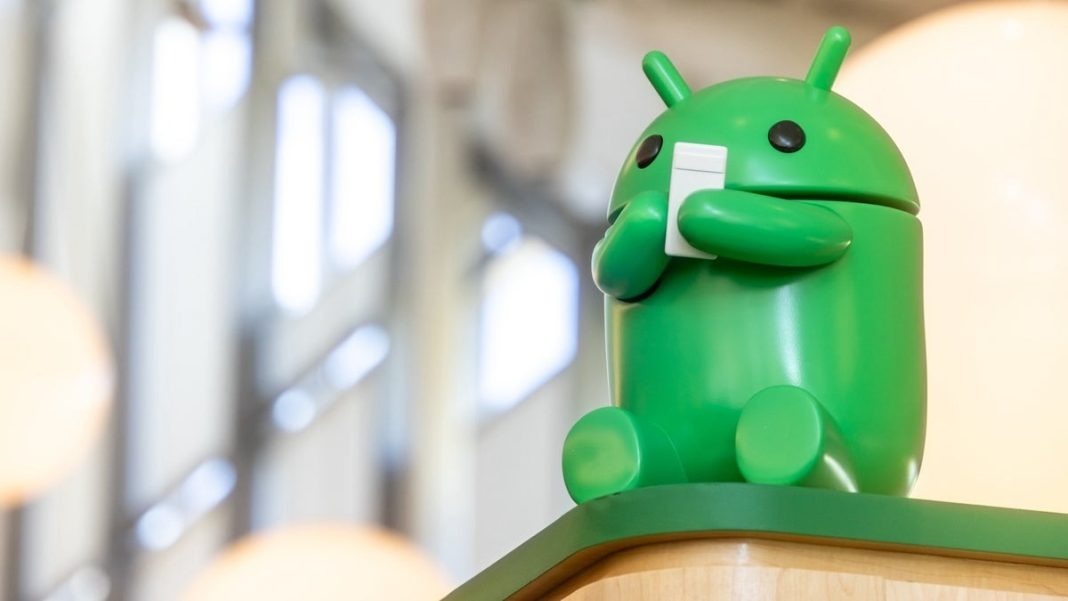Google Calendar’s Material You redesign with dark theme and Google Fi SIM card manufacturing issue resolved

Google is rolling out a Material You redesign for its web-based Calendar app, aligning it with updates already made to other Google Workspace tools like Gmail, Drive, Docs, Sheets, and Slides. This redesign introduces a more modern interface, including a much-requested dark theme.
Google Calendar Material You Redesign
The new look for Google Calendar on the web enhances user experience by modernizing the visual layout and improving accessibility. Here’s a breakdown of the changes:
- Material You Design:
- The main calendar is now placed in a container with rounded edges, while the top and sidebars have a light blue background. This creates a cohesive look across Google Workspace services.
- Modern Controls: Buttons, dialogs, and sidebars have been updated to be more user-friendly and accessible.
- Typography: Google has integrated its custom typefaces, designed for high readability, into the interface for improved text clarity.
- Iconography: Icons are now more legible, crisp, and modern, offering a fresh, clean aesthetic.
- Dark Theme Option: The introduction of a dark theme is one of the most significant updates to Google Calendar. Users can now choose between three theme options:
- Light Mode
- Dark Mode
- Device Default (which adapts to the system’s theme settings)
You can adjust these settings by going to the Settings gear icon and selecting Appearance. Dark mode has been a highly anticipated feature, especially for those who prefer a less glaring display, especially in low-light environments.
- Impact on Chrome Extensions: Google has issued a warning that the visual updates may interfere with certain Chrome extensions used alongside Google Calendar. This might cause some extensions to malfunction or not display as expected. Google recommends contacting the developers of these extensions to report issues.
- Task Integration Update: Along with Calendar, Tasks.google.com has also received a similar Material You update, making for a more consistent design across Google’s suite of productivity tools.
This new Material You and dark theme redesign is rolling out over the next few weeks for all Google Workspace users, including individual subscribers and those with personal Google accounts.
Google Fi SIM Card Manufacturing Issue
Google Fi Wireless recently discovered a manufacturing defect affecting some SIM cards, causing them to fail for certain users. The issue led to SIM cards randomly malfunctioning, displaying an “Insert SIM card” error on devices, even when users hadn’t removed or changed their cards. Some users who received replacement SIM cards experienced repeated failures.
Google addressed this issue by identifying the specific batch of faulty SIM cards. They have since rectified the problem and assured customers that new SIM cards should function correctly without further issues. Here are the key points:
- Customer Communication: Impacted users were notified via email, where Google outlined the problem and its resolution. Customers using affected SIM cards are being advised to switch to new cards to prevent unexpected disruptions.
- Compensation and Support: Some users have reported receiving a $60 credit toward their service or billing, as compensation for the inconvenience caused by the faulty SIM cards. Google Fi is actively reaching out to users who either experienced this issue previously or are still using an impacted SIM card.
- Switch to eSIM: To avoid future problems, Google is recommending the use of eSIMs (embedded SIMs), especially for those who encountered this problem. For users with older devices that do not support eSIM, Google Fi is offering replacement SIM cards with expedited shipping at no cost.
- Next Steps for Affected Users: If you receive a notification from Google regarding your SIM card, it’s advised to follow their recommendation and switch to a new SIM to prevent further issues. While eSIMs provide a more modern, hassle-free solution, physical SIM cards are still available for devices that require them.
With Google Calendar’s fresh design and the resolved SIM card issue from Google Fi, Google continues to enhance both its software and wireless services, aiming to provide a more user-friendly experience. The Material You redesign, coupled with the dark theme and a focus on accessibility, highlights Google’s commitment to improving its platform’s visual and functional aspects. Meanwhile, Google Fi’s proactive response to the SIM card failure demonstrates its dedication to resolving technical issues quickly and ensuring a smoother experience for its users.
Android
Google Phone app enhances scam call reporting and new Chromecast update rolled out

The Google Phone app is steadily becoming more user-friendly, especially when dealing with spam and scam calls. In a recent update, Google has introduced and is refining features to empower users to report fraudulent calls more effectively. Meanwhile, a fresh update for the Chromecast with Google TV has begun rolling out, keeping the device optimized as Google preps for larger changes.
Google Phone App: Smarter Tools for Scam Reporting
The Google Phone app has long been a reliable tool for blocking unwanted calls, but it’s taking scam call reporting to the next level. Users can already block or report spam calls directly from the call log by long-pressing an entry and selecting “Block or report.” From there, you can classify the call as either spam or scam and choose whether to block the number. However, this process currently sends minimal context to Google.
An upcoming update is set to introduce a detailed feedback mechanism. Version 155.0.697690833-publicbeta of the app hints at a future feature where users can provide additional insights about scam calls. This update may include:
Enhanced Reporting Options
When reporting a call as a scam, users might see a multi-select menu with questions like:
- What did the scammer ask for?
- Personal information (e.g., full name)
- Passwords
- Electronic payments
- App downloads
- “Not applicable” or “Something else” (with a text entry option)
- What did the scammer pretend to be?
- Government agencies (e.g., FBI, IRS, Social Security Administration)
- Friends or acquaintances
- Law enforcement (e.g., police)
- “Not applicable” or “Something else” (allowing for further details)
This information will be reviewed by Google and could potentially be used to warn other users about known scam numbers or their tactics.
Lookup Button Gets Better Placement
The update also tweaks the Lookup button, which helps identify unknown numbers. While this button has existed in the app, it is now visible within the Google Contacts app when accessed through the Phone app. A banner labeled “Contact info from Phone” further clarifies the context.
Although these features are still in development and not yet available for public use, they highlight Google’s ongoing efforts to combat spam and scam calls.
Chromecast with Google TV: Latest Update Rolling Out
Google is also rolling out a new update for the Chromecast with Google TV, continuing its commitment to improving performance and security.
Update Details
- Version: STTL.240812.006.N1 (upgraded from STTL.240812.006)
- Size: 59.48 MB (smaller than October’s 83.01 MB patch)
- Patch Level: September 2024 (still based on Android 12)
- Changes: General bug fixes and performance improvements.
This marks the eighth update for Chromecast with Google TV in 2023, following monthly patches since February. While these incremental updates focus on stability, they pave the way for a bigger milestone: Android 14.
What’s Next for Chromecast?
The Android 14 update is expected to bring a significant feature called “Home runtime”, enabling Chromecast devices to function as hubs for Matter smart home devices. Google has until the end of the year to roll out this transformative upgrade, and this recent patch could be preparing the device for the transition.
How to Update Your Chromecast
To ensure you have the latest version:
- Navigate to Settings on your Chromecast with Google TV.
- Go to System > About > System update.
- Follow the prompts to install the update.
Conclusion
Google’s latest improvements for the Phone app and Chromecast with Google TV showcase its focus on user experience and security. With smarter scam call reporting on the horizon and updates ensuring devices stay optimized, Google continues to lead in enhancing everyday tech. Stay tuned as these features and updates roll out to users worldwide!
Android
Android 16 enhances notification privacy and introduces integrated screen dimming

Android 16 is already making waves with its first developer preview (DP1), introducing two notable features that improve privacy and usability: automatic hiding of sensitive notifications on the lock screen and seamless integration of screen dimming functionality into the brightness bar. These updates aim to enhance user experience while prioritizing data security and convenience.
Protecting Sensitive Notifications on the Lock Screen
Lock screen notifications offer quick access to updates, but they can expose sensitive information to prying eyes, especially if your device is lost or stolen. Android 16 tackles this issue by automatically hiding the contents of sensitive notifications, particularly those containing one-time passwords (OTPs) and two-factor authentication (2FA) codes.
In Android 16 DP1, notifications deemed “sensitive” by the Android System Intelligence service are automatically redacted on the lock screen, regardless of your notification settings. While users can still control how notifications are displayed—choosing to hide titles, summaries, or all notification content—this feature ensures that sensitive information is protected by default.
This builds on privacy enhancements introduced in Android 15, where untrusted apps were blocked from accessing sensitive notifications, even with notification-reading permissions. Android 16 takes it a step further by ensuring these notifications are redacted on the lock screen itself, safeguarding your data from potential breaches.
Evolving Lock Screen Notification Settings
The updated lock screen notification settings in Android 16 provide flexible options:
- Sensitive Notifications Setting: Allows you to hide titles and summaries for all notifications, while still displaying app icons.
- Lock Screen Notification Control: Lets you choose to show all, hide specific categories like conversations, or hide all notifications entirely.
However, many users stick to default settings, which display full notification content. Android 16 ensures that even in this default mode, sensitive OTP notifications remain hidden, preventing accidental exposure.
Even Dimmer: A Smarter Screen Dimming Solution
Alongside privacy enhancements, Android 16 DP1 introduces “Even Dimmer,” a more integrated version of the existing Extra Dim mode. This feature simplifies the process of reducing screen brightness for comfortable viewing in low-light conditions.
Previously, the Extra Dim feature had to be activated manually via Settings > Accessibility or through a Quick Settings tile. While effective, it required extra steps and could easily be forgotten. With Even Dimmer, the functionality is embedded directly into the brightness bar. Sliding the bar to its lowest point now triggers an additional dimming layer, making it intuitive and accessible.
Why Even Dimmer is a Game-Changer
- Seamless Integration: Even Dimmer removes the need for separate toggles, blending directly into everyday brightness adjustments.
- Quick Deactivation: Simply increasing the brightness disables the feature, reducing the chance of accidentally leaving it on.
- Eliminates Redundancy: The Extra Dim feature will be removed once Even Dimmer is fully rolled out, simplifying the interface further.
Availability and Device-Specific Rollout
Curiously, Even Dimmer is not universally available across all Pixel devices running Android 16 DP1. For now, it seems limited to the base Pixel 9, where the feature is enabled through a device-specific framework overlay. Other Pixel models, including the Pixel 6, 8, and 8a, lack this feature in the current preview.
Google may expand availability in future updates or adjust the rollout based on testing and feedback. However, this selective activation suggests it might be fine-tuning the feature for broader compatibility.
What to Expect from Android 16
While Android 16 is still in its early stages, the inclusion of these features reflects Google’s focus on balancing usability with security. The automatic hiding of sensitive notifications and the streamlined dimming functionality highlight the platform’s evolution toward a smarter, more user-centric design.
As Google refines these features in upcoming developer previews, Android users can look forward to a safer and more convenient experience in the final release. Whether it’s protecting your private data or making your screen easier on the eyes, Android 16 sets a new standard for mobile operating systems.
Android
Google enhances Android data transfer and app login features: What to Expect in 2025

Google is making it easier to set up Android devices with new features aimed at improving data transfers and app logins. These advancements, introduced with the Pixel 9 and expanding across more Android devices in 2025, aim to simplify the user experience when switching devices or setting up a new phone.
Post-Setup Data Transfer: Explore First, Transfer Later
With the Pixel 9 running Android 14, Google introduced a flexible data transfer option. Users can now copy data from another device even after completing the initial setup. This feature, accessible through the “Back up or copy data” page in system settings, encourages users to explore their new device before transferring data.
Starting in 2025, this post-setup transfer capability will be available on more Android phones. This feature allows users to complete basic setup quickly and transfer data later when it’s convenient. Data transfers can be initiated via system settings or through the updated Android Switch app, which is available on both Android and iOS platforms.
Faster and Smarter Android Switch Experience
Google has been improving the Android Switch process for the past two years, focusing on speed and convenience. Key highlights include:
- 40% Faster Transfers: Transferring data from iOS to Android using a cable is now significantly quicker compared to 2023.
- Comprehensive Data Support: The transfer process ensures that critical data like chats, calendars, contacts, Wi-Fi configurations, screen lock settings, and Google accounts are seamlessly moved to the new device.
- RCS Compatibility: Rich Communication Services (RCS) improve messaging capabilities during the transition. Users can enjoy high-resolution media sharing, emoji reactions, and group chat management regardless of whether friends use Android or iOS.
However, full RCS data transfers are currently exclusive to Pixel 9 and are not yet available for other Android devices.
Credential Manager: Stay Logged In Effortlessly
Google is also addressing the hassle of logging back into apps after setting up a new device. The Credential Manager API, a tool responsible for managing sign-ins and passkeys, now includes a feature called Restore Credentials.
How Restore Credentials Works:
- Backup Creation: When users log into an app, a restore key is created and stored securely. This key is encrypted and saved either locally or in cloud backups, depending on the user’s preferences.
- Seamless Transfer: During device setup, restore keys are transferred along with app data—either via local device-to-device transfer or through cloud backup.
- Automatic Login: Once the app is launched on the new device, it retrieves the restore key to sign the user back in automatically.
This process eliminates the need for manual logins and even allows users to receive notifications and access app content without opening the app first.
Developer Integration:
- No additional developer work is needed for transferring restore keys, as the Android backup and restore mechanism handles this automatically.
- Developers can further enhance the experience by implementing a “backup agent,” enabling silent logins so users remain signed in without launching the app.
Availability and Future Outlook
The Restore Credentials API is currently in developer preview and supports Android 9 and later versions. With these features expanding across Android devices in 2025, Google is set to make device setup and data transfer smoother than ever.
By focusing on user-friendly innovations like post-setup data copying and automatic app logins, Google is redefining how Android users transition to new devices while ensuring data security and convenience.
-

 Apps9 months ago
Apps9 months agoGboard Proofread feature will support selected text
-

 News9 months ago
News9 months agoSamsung USA crafting One UI 6.1.1
-

 News8 months ago
News8 months agoBreaking: Samsung Galaxy S22 may get Galaxy AI features
-

 News8 months ago
News8 months agoSamsung Galaxy S23 Ultra with One UI 6.1 and all S24 AI features revealed
-

 News9 months ago
News9 months agoOne UI 6.1 Auracast (Bluetooth LE Audio) feature coming to many Samsung phones
-

 News9 months ago
News9 months agoSatellite SOS feature coming to Google Pixel phones, evidence leaked
-

 Apps6 months ago
Apps6 months agoGoogle’s fancy new Weather app is finally available for more Android phones
-

 News9 months ago
News9 months agoGoogle Pixel evolves as Europe’s third best selling flagship




